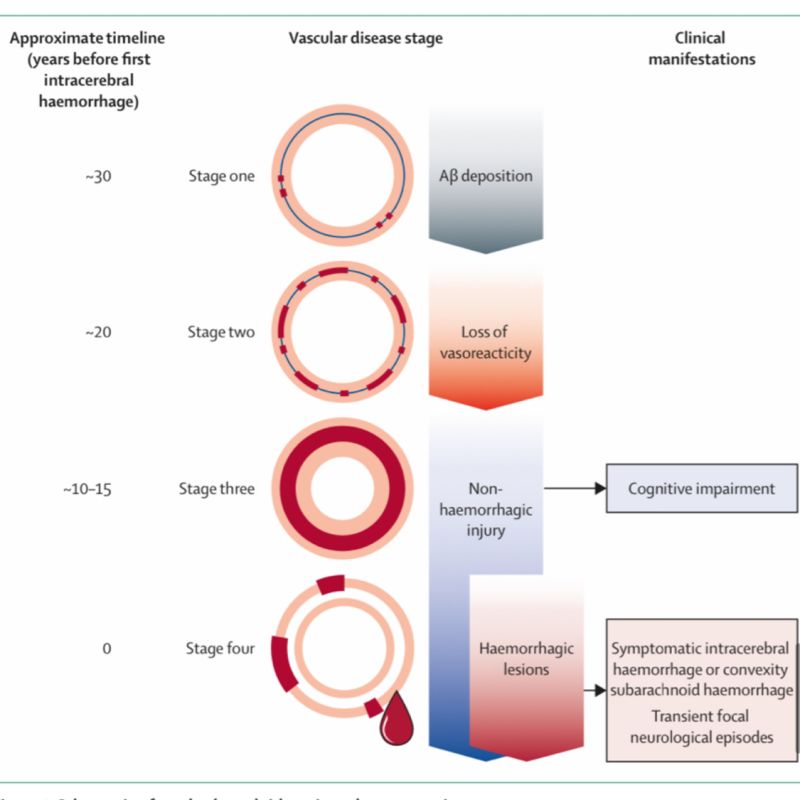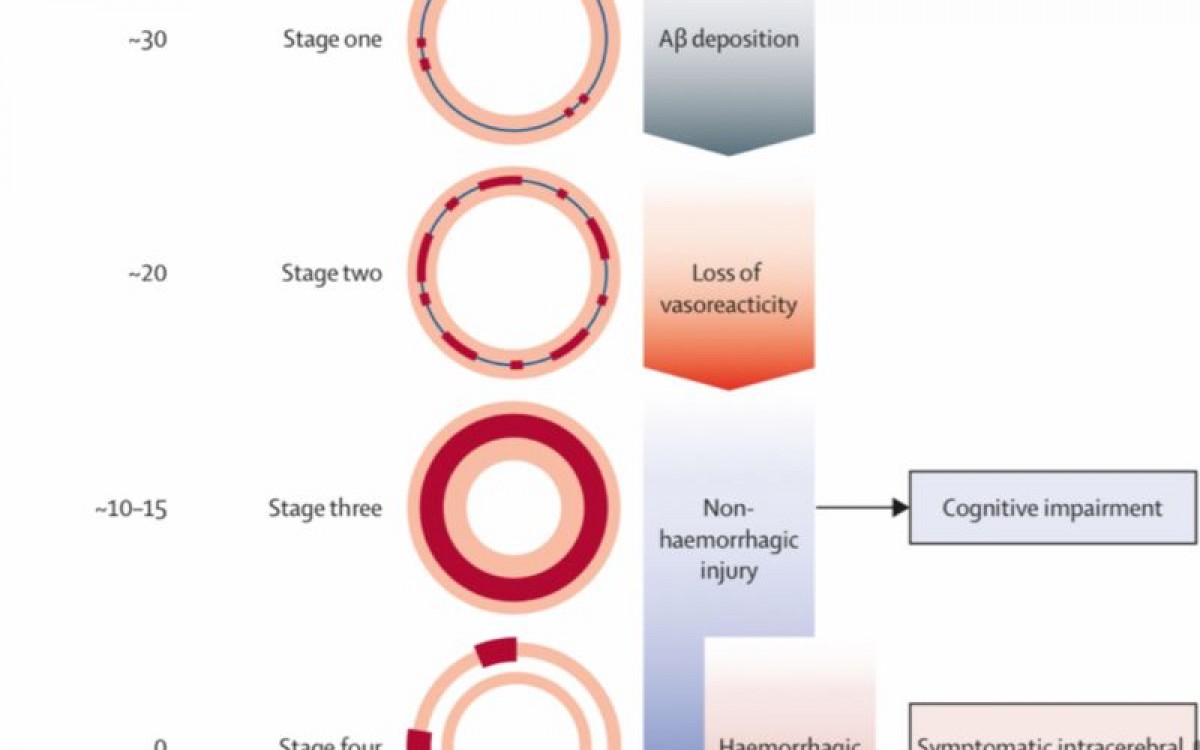Important new development: the 4 fases of Dutchtype CAA
You hear it often enough: the current research into Dutchtype CAA helps us understand how the disease develops. What does that mean exactly? The research team at the LUMC recently published an important new scientific article in the Lancet, in which they describe the phases of the disease.
Some of you have been participating in research for years and we and the research teams are grateful for it. Based on the results of those studies, research in the donated brains of deceased relatives and research in mice, 4 phases of the disease have now been identified. These are: 1) initial protein build-up, 2) reduced cerebral vessel response to stimulation (for example, in the part of the brain that responds to visual stimuli), 3) vessel damage without cerebral hemorrhage, 4) cerebral hemorrhages(s). The 4 phases are visualized by Ellis van Etten in the following image.

The research shows that the first accumulation occurs 20 years before phase 4 starts. This means that in gene carriers the accumulation starts around the age of 30. That insight can be quite shocking and at the same time provides important insight for drug development. After all, that is partly about when you should start intervening and how you can measure that the disease is actually slowing down as a result of the therapy.
How this will affect future drug research is not yet clear. As always, we will keep you informed. Would you like to receive the scientific article? Please email Sanne with a request via svanrijn@hchwa-d.nl.
